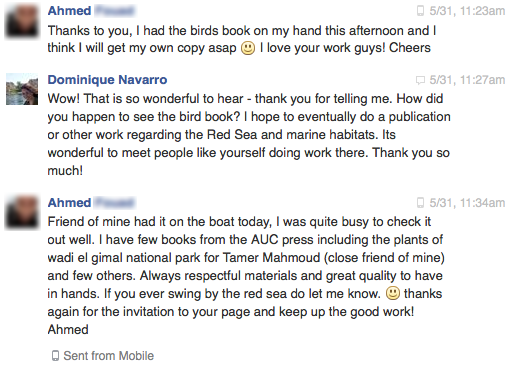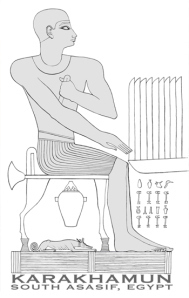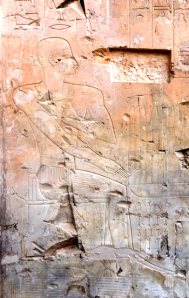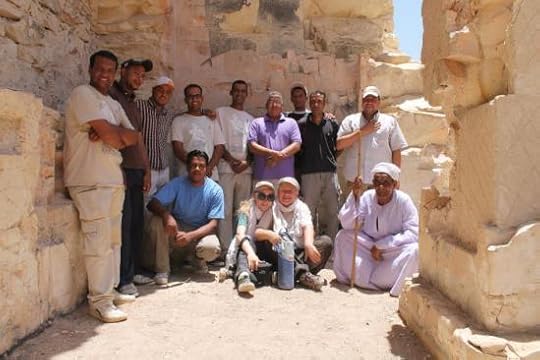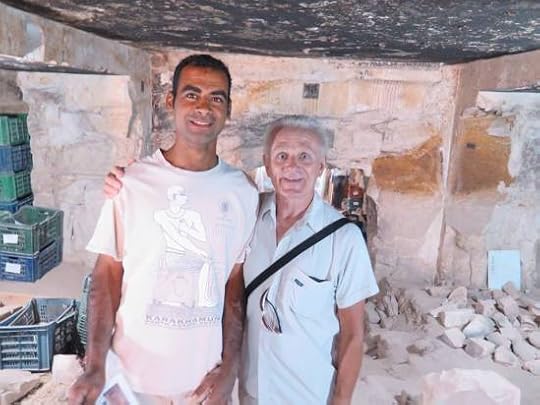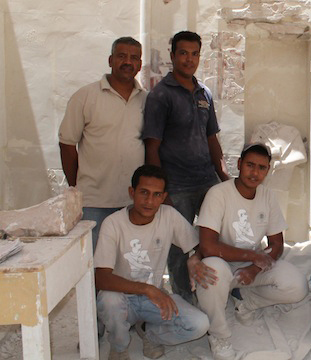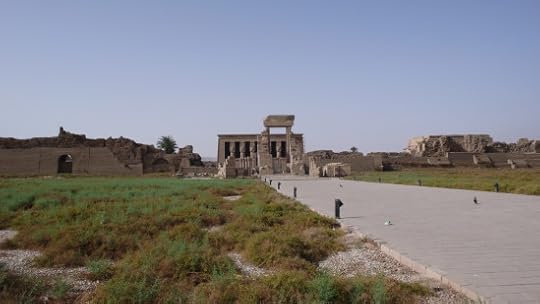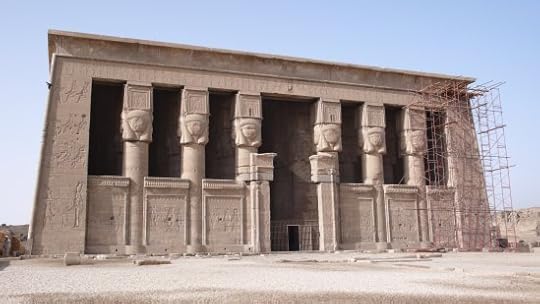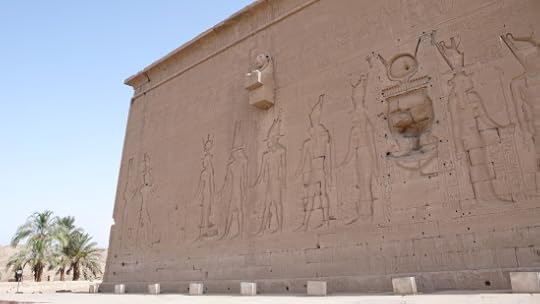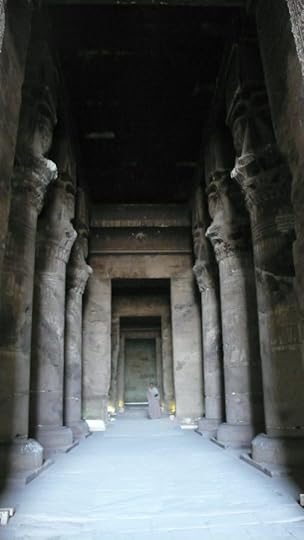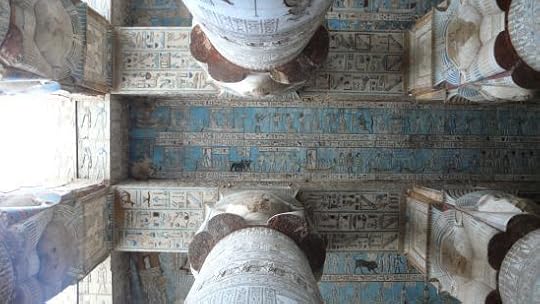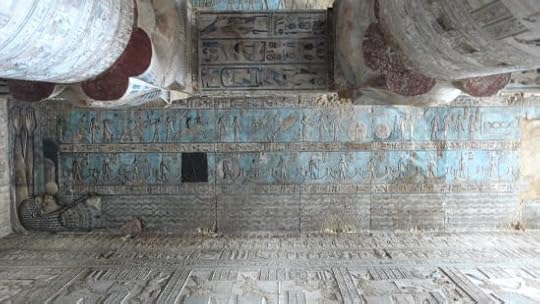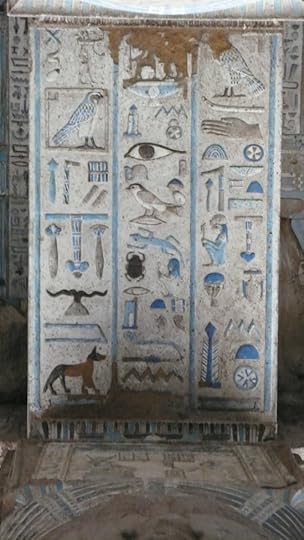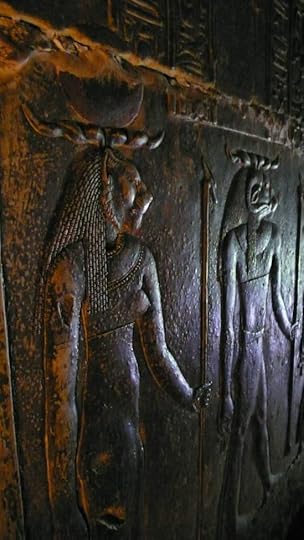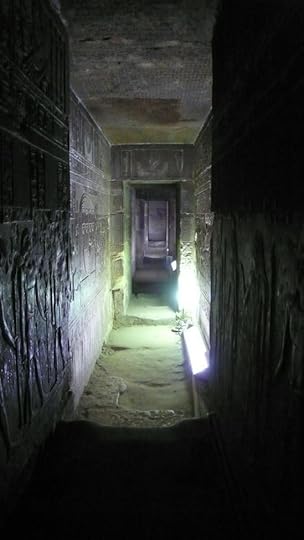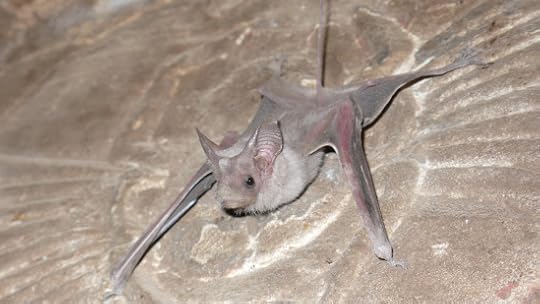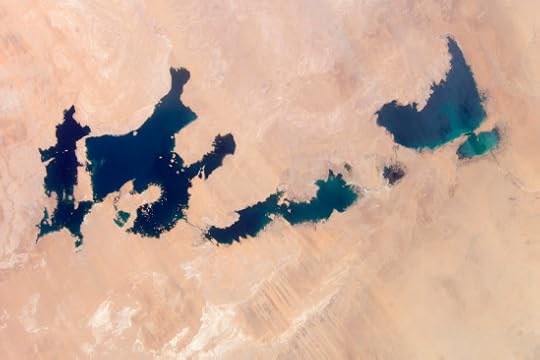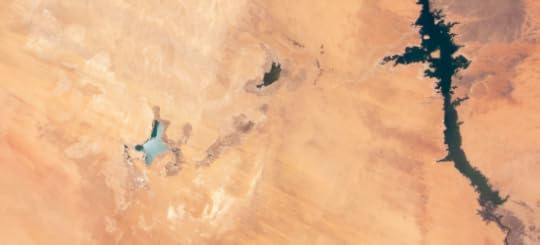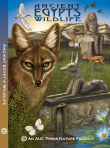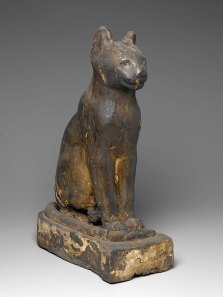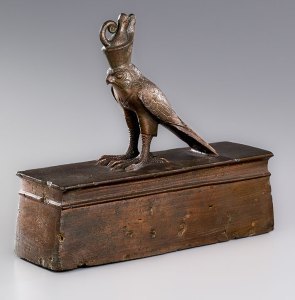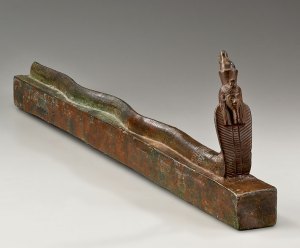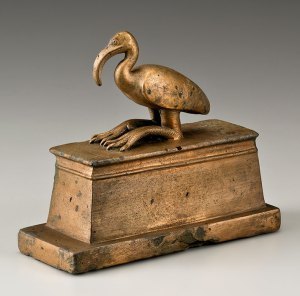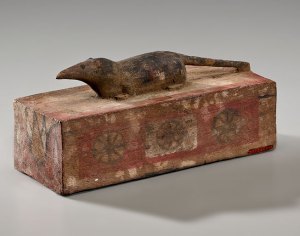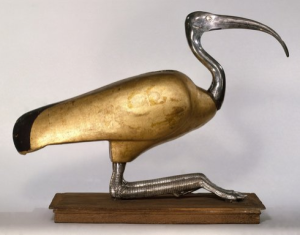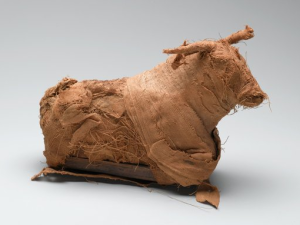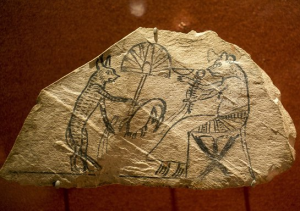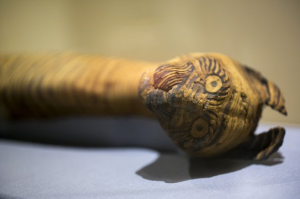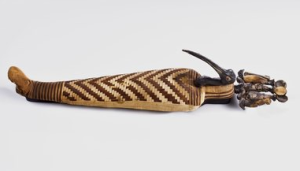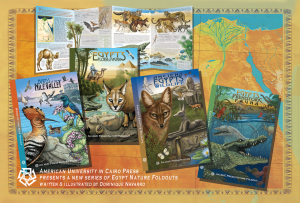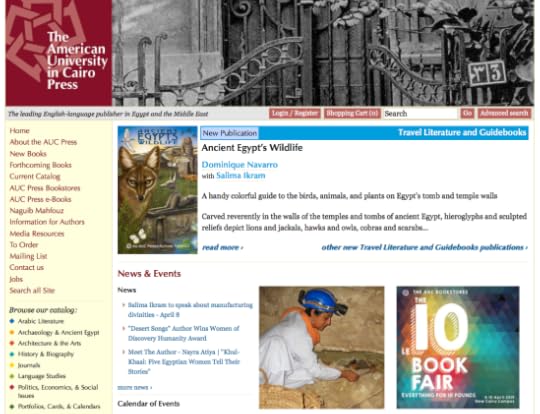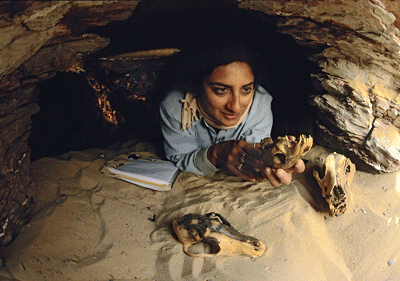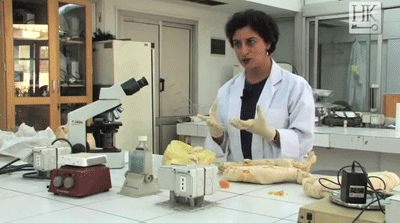Dominique Navarro's Blog, page 19
May 30, 2014
A really nice note about the Nature Foldouts today…
May 12, 2014
Egypt Excavation Epigraphic Artwork T-shirts
So happy to see that the artwork I did for the excavation at South Asasif was made into t-shirts and given to the restoration team!
Filed under: Related Stories, Ventures & Vistas in Egypt 







April 20, 2014
Happy Easter! Scenes from Dendera Temple, Egypt
 A few years ago I was fortunate enough to spend my Easter morning wandering the labyrinthine halls and stairways of Dendera Temple. It was incredibly breathtaking – the colors vivid and fresh, and animals depicted everywhere in the elegant artwork.
A few years ago I was fortunate enough to spend my Easter morning wandering the labyrinthine halls and stairways of Dendera Temple. It was incredibly breathtaking – the colors vivid and fresh, and animals depicted everywhere in the elegant artwork.
Dendera was an active site for chapels and shrines from the beginning of ancient Egypt and it embodies some unique and fascinating history and imagery, including one of the few depictions of Cleopatra, the Dendera Zodiac, and the peculiar “Dendera light.”
I had the temple all to myself on Easter morning, 2012.
I also chased this fantastic lesser mouse-tailed bat (Rhinopoma cystops) through the winding stairways.
For more images from Dendera check out the Nature Unfolding Flickr site: https://www.flickr.com/photos/dominiquenavarro/sets/72157633917978013/
Filed under: Ventures & Vistas in Egypt








Happy Easter and Happy Shamm al-Nisim!
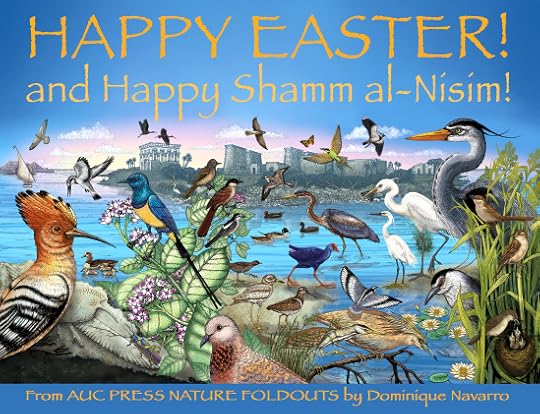
Happy Easter and Happy Shamm al-Nisim!
Shamm al-Nisim is an Egyptian national holiday marking the beginning of spring and always falls on the day after Easter. The name of the holiday is derived from the Egyptian name of the Harvest Season, known as Shemu, which means a day of creation.
Artwork from “Birds of the Nile Valley” of the Egypt’s AUC Press Nature Foldouts publication series.
AUC Press: http://aucpress.com/search.aspx?SearchTerm=navarro
Amazon: http://www.amazon.com/Dominique-L.-Navarro/e/B006GGU62O
Filed under: AUC Press Nature Foldout News Updates








April 17, 2014
The Toshka Lakes of Southern Egypt
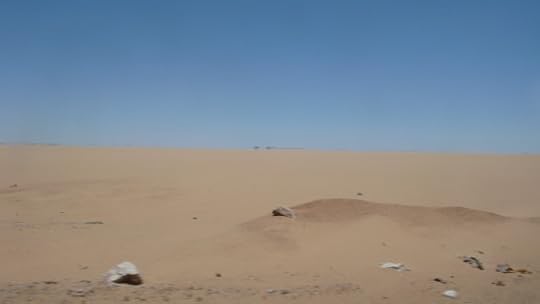
I first became vaguely aware of Egypt’s Toshka Lakes driving through the Libyan Desert on my way to Abu Simbel in the summer of 2011. In the middle of this desolate, unfathomable desert, we drove over a canal which sparked my curiosity…
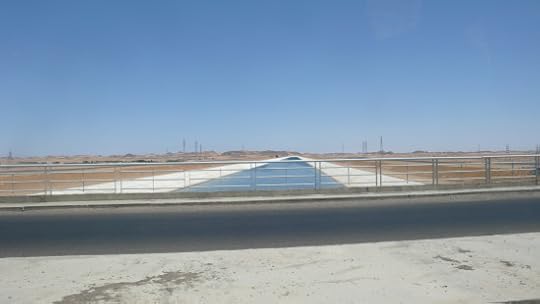
The canal was part of ex-President Mubarak’s 1997 New Valley Project, or Toshka Project, consisting of building a system of canals to carry water from Lake Nasser through Wadi Toshka for irrigation in the Western Desert. Here in a “new valley,” agriculture and industrial communities could be developed in the hope of supporting a home for millions of Egyptians. In the process of this development, four major lakes developed from the diversion of water from Lake Nasser via the canals.
The Toshka Project was supposed to be completed by 2020. Obviously, things have not gone as planned in Egypt the last few years, and ambitious, expensive undertakings like this have likely come to a standstill.
The most recent NASA photos from 2012 also indicate that this project had come to a halt, with water in the associated Toshka Lakes evaporating in the hot desert extensively…
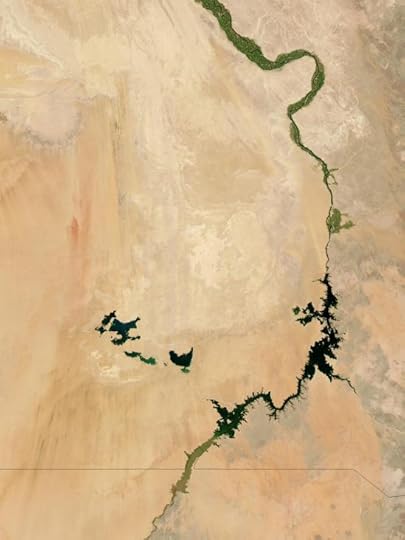
From earthobservatory.nasa.gov: In the photo, a verdant green stripe marks out the banks of the Nile River in southern Egypt. Near Egypt’s southern border with Sudan, the Aswan dam blocks the river, making it swell into Lake Nasser. To the left are the Toshka Lakes.
Egypt’s Toshka Lakes were created in the 1980s and 1990s by the diversion of water from Lake Nasser through a manmade canal into the Sahara Desert. Flooding of the Toshka Depression created four main lakes with a maximum surface area of about 1450 square kilometers—around 25.26 billion cubic meters of water. By 2006, the amount of stored water was reduced by 50 percent. In June 2012, water filled only the lowest parts of the main western and eastern basins—representing a surface area of 307 square kilometers, or roughly 80 percent smaller than in 2002. Water is almost completely absent from the central basin.
From space, astronauts documented the first lake—the easternmost one—in 1998. The lakes grew progressively as water flowed further west into each depression, with the westernmost basin filling between 2000 and 2001. The lakes were largely depleted by mid-2012, whereas water levels were at their highest in 2002.
2002:
2012 (with Lake Nasser on the far right):
How long before Egypt’s Toshka Lakes completely dry up? In the decades they were there, did they support new wetlands, bird migrants, or become a refuge for Egypt’s crocodiles?
Excellent article by NPR from 2012: http://www.npr.org/2012/07/10/155027725/mubaraks-dream-remains-just-that-in-egypts-desert
Filed under: Egypt Environmental News








April 9, 2014
Catching up with Salima!
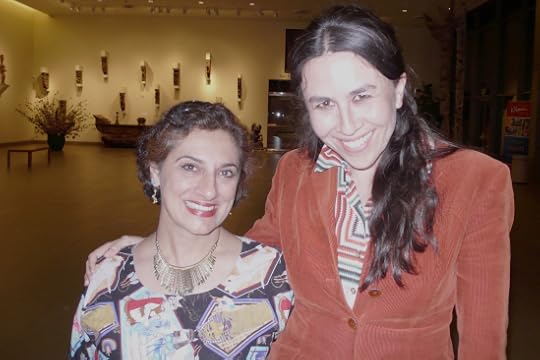
The AUC Press Nature Foldouts may never have happened without Salima Ikram’s wondrous support and enthusiasm. I am beyond grateful to her! She is both a collaborator and mentor, as well as an incredible friend!
I have had the fortune of meeting up with her from Cairo to Luxor, but on this occasion she was in Los Angeles giving a fantastic presentation at the Bowers Museum for their exhibit Soulful Creatures: Animal Mummies in Ancient Egypt. As an Egyptologist and zoo-archeologist, Salima describes what we can learn from the study of animal remains and burials from ancient Egypt, and explains the elaborate process of mummifying animals including pets and votive offerings for the animal gods. It is a fantastic and unique insight to understanding ancient Egypt.
Salima was the scientific consultant for Ancient Egypt’s Wildlife; AUC Press Nature Foldout, which is currently sold out in the Bowers Museum store. However, they are available through AUC Press and Amazon.
Salima’s book, Divine Creatures: Animal Mummies in Ancient Egypt (AUC Press 2005) is also available at the Bowers Museum and online.
Filed under: AUC Press Nature Foldout News Updates, Meet the Team!








April 7, 2014
Animal Mummy Coffins of Ancient Egypt – An Archeology Magazine Article
Animal Mummy Coffins of Ancient Egypt – An Archeology Magazine Article
This wooden coffin held a complete mummified cat, an animal that became popular as a domestic pet in the first millennium B.C. and was associated with the goddess Bastet.
A bronze coffin, possibly from the animal necropolis at Saqqara, Egypt, was dedicated to the falcon god Horus.
This bronze cobra coffin with the head of a human wearing a crown represents the god Atum, who was thought to have swum in primordial waters before creating the world.
This bronze coffin dating to between 664 and 30 B.C. held an ibis bundle, the most common type of animal mummy in ancient Egypt.
A painted wooden coffin dating to between 664 B.C. and 332 B.C. depicts a shrew, a nocturnal animal, which represented Kenty-irty, a god with the ability see in darkness.
Filed under: Key Stage 2 Ancient Egypt, Related Stories








A Menagerie of Ancient Animal Mummies at the Bowers Museum – Los Angeles Times Article
A Menagerie of Ancient Animal Mummies at the Bowers Museum – Los Angeles Times Article
On View: The new Bowers Museum exhibit ‘Soulful Creatures’ explores the ancient Egyptian practice of mummifying animals as food offerings for the deceased or as a communication to the gods.
This golden sculpture is actually an ibis coffin, a receptacle for one of the millions of birds that ancient Egyptians mummified, usually in hopes of sending messages to the gods. Ptolemaic Period, 305-30 BC
This cloth bull — actually a mummy containing a single bone – dates to the Third Intermediate Period, circa 1075-656 BC, or Late Period, circa 664-332 BC. (Bowers Museum)
This ancient limestone features the drawing of a cat and mouse performing human tasks.
Cat mummy is part of the exhibition “Soulful Creatures: Animal Mummies in Ancient Egypt” at the Bowers Museum.
This ibis mummy comes from a cemetery devoted specifically to the Egyptian bird. It dates to the early Roman period starting circa 30 BC.
The AUC Press Nature Foldouts are also available at the Bowers Museum illustrating the unique range of animals, birds, and plants found in ancient Egypt and today.
Filed under: Key Stage 2 Ancient Egypt, Related Stories








April 5, 2014
AUC Press Nature Foldouts & Egyptologist Salima Ikram
April 3, 2014
Salima Ikram Lecture on Animal Mummies – Bowers Musuem, California, April 8
Salima Ikram Lecture on Animal Mummies – Bowers Musuem, California, April 8
Egyptology professor and AUC Press author Salima Ikram is giving a lecture on “Manufacturing Divinities: Creating Animal Mummies in Ancient Egypt” at the Bowers Museum in California on April 8, an event co-sponsored by the American Research Center in Egypt.
She will talk about the different types of animal mummies (food, pets, votive offerings, sacred creatures, and ‘other’) and explain how and why they were made. Ikram will also discuss experimental archaeology, and raise the socio- economic as well as religious implications of animal mummies.
Her lecture will be followed by a book signing.
Ikram is the editor of Divine Creatures: Animal Mummies in Ancient Egypt (AUC Press 2005), and co-author of The Mummy in Ancient Egypt (AUC Press, 1998) and The Tomb in Ancient Egypt (AUC Press, 2008). She is also the author of Ancient Egypt: An Introduction (AUC Press, 2011).
This special event takes place in conjunction with the ongoing exhibition “Animal Mummies: Soulful Creatures in Ancient Egypt” being held at the Bowers Museum until 15 June 2014. Drawn from the renowned collections of the Brooklyn Museum, the exhibition features choice examples from among the many millions of mummies of birds, cats, dogs, snakes, and other animals preserved from at least thirty-one different cemeteries throughout Egypt. “Animal Mummies” is the first major exhibition to focus on this aspect of ancient Egyptian culture and religion.
In a video made by Heritage Key, Salim Ikram explains how animal mummies were made. “Animals were mummified in a variety of ways,” explains Ikram, associate professor of Egyptology at the American University in Cairo. “Basically what mummification does is to desiccate the body so you can be preserved for eternity; the basic thing to do then would be, if it is a large animal, to remove the internal organs and to dry out the body.”
* Salima is a Scientific Consultant for the AUC Press Nature Foldouts. The foldouts as well as Salima’s book Divine Creatures; Animal Mummies in Ancient Egypt are availalbe in the Bowers Museum Gift Store and online.
Filed under: AUC Press Nature Foldout News Updates









